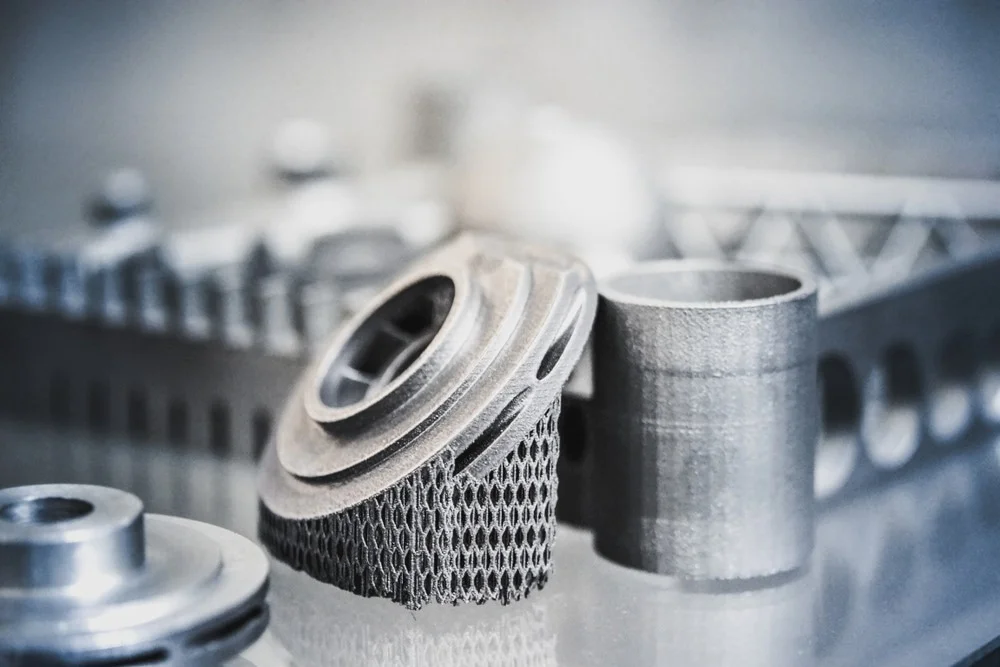ASTM E21 Tensile Testing at Elevated Temperatures
The ASTM E21 tensile test is a critical procedure used to evaluate the mechanical properties of materials, particularly under conditions that simulate real-world operating environments. This test is especially important in sectors where materials are exposed to high temperatures, such as aerospace, automotive, and power generation industries. The ASTM E21 standard outlines methods for conducting tensile tests on metallic materials at elevated temperatures.
The process involves subjecting a specimen to controlled tension until it fractures or yields, while simultaneously monitoring the force applied and displacement of the specimen. This test provides insights into how well a material will perform under stress in extreme conditions such as those found during manufacturing processes or operational use. The data obtained from this testing can help ensure product quality, safety, and compliance with industry standards.
Materials that undergo ASTM E21 testing include metals like steel, nickel-based alloys, titanium alloys, and other high-performance materials used in demanding applications. By understanding the behavior of these materials at elevated temperatures, manufacturers can optimize design parameters, improve performance specifications, and extend service life. This is particularly crucial for components operating in environments where failure due to thermal stress could result in catastrophic consequences.
The ASTM E21 procedure involves several key steps. First, appropriate specimens are prepared according to the specified dimensions outlined in the standard. These samples are then heated to the desired temperature and held there until they reach a stable state. Once at the target temperature, the specimen is subjected to tensile loading using a testing machine equipped with appropriate fixtures capable of handling high-temperature environments.
The test results provide valuable information about various material characteristics including yield strength, ultimate tensile strength (UTS), elongation, and reduction in area. These properties are essential for assessing whether materials meet the required specifications for their intended application. Furthermore, by comparing these values across different batches or suppliers, quality control teams can identify potential issues early on.
One notable aspect of ASTM E21 testing is its ability to reveal creep behavior which occurs when a material deforms permanently under prolonged exposure to stress at elevated temperatures. Creep resistance is critical for many components used in power plants, turbines, and other machinery subjected to continuous operation at high temperatures. Understanding this phenomenon allows engineers to design parts that can withstand long-term service without failing.
In summary, ASTM E21 tensile testing at elevated temperatures plays a vital role in ensuring product integrity across various industries by providing comprehensive mechanical property data under simulated operating conditions. This information supports informed decision-making regarding material selection and process optimization, ultimately leading to safer and more reliable products.
- Provides insights into the mechanical properties of materials under stress at high temperatures
- Helps ensure compliance with industry standards
- Supports optimized design and improved performance specifications
- Identifies potential issues early in the manufacturing process
- Reveals important information about creep behavior, critical for components operating continuously at elevated temperatures
Why It Matters
The significance of ASTM E21 tensile testing cannot be overstated in industries where materials are subject to severe thermal stresses. For instance, aerospace engines operate under extreme conditions requiring robust materials capable of maintaining structural integrity over extended periods. Similarly, power plant turbines must endure high temperatures during continuous operation without failing.
By conducting this test according to the ASTM E21 standard, manufacturers can gain confidence that their products will perform reliably in challenging environments. This not only enhances product quality but also contributes significantly to operational safety and efficiency.
In addition to its technical importance, ASTM E21 testing supports broader business objectives such as cost reduction through optimized material usage and improved process control. The detailed reports generated from these tests enable companies to make data-driven decisions that drive innovation while minimizing risks associated with substandard materials or processes.
Why Choose This Test
- Ensures compliance with industry standards and regulations
- Provides accurate measurement of mechanical properties under high-temperature conditions
- Aids in the selection of appropriate materials for demanding applications
- Supports continuous improvement initiatives by identifying areas for enhancement
- Facilitates better understanding of material behavior at elevated temperatures, including creep resistance
ASTM E21 tensile testing offers numerous advantages that make it an indispensable tool in the quality assurance and product development processes. Its ability to simulate real-world operating conditions makes it particularly valuable for industries dealing with extreme environmental factors.
International Acceptance and Recognition
The ASTM E21 tensile test is widely recognized globally as a reliable method for evaluating the mechanical properties of materials under high-temperature conditions. Its acceptance extends beyond national borders, making it an ideal choice for international collaborations and compliance efforts.
Countries around the world have adopted this standard due to its stringent requirements and consistent results across different laboratories. Organizations like ISO (International Organization for Standardization) often reference ASTM E21 in their own documents, further emphasizing its importance within the global standards community.
By adhering to ASTM E21, companies can ensure that their testing practices align with international best practices, thereby enhancing credibility and interoperability when working with partners or customers from various countries. This standardization fosters trust between stakeholders involved in material science research and development projects worldwide.





